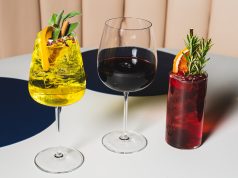
Sam Green of Boulder Beer would love to make sure everyone got to taste the brewery’s wine barrel-aged beers, Xena Warrior Princess and Patchouka Sunrise. He really would. But it’s just not that easy anymore. “Those were extremely popular when we released them at the [Great American Beer Festival],” says Green. “I was hoping to do that again, but when I called these wineries they laughed in my face. These days, the whole game has changed.”
In the time before craft brewing became a national phenomenon, aging barrels were in ready supply. Barrelaged beers were specialty items ordered by entrenched snobs or showcased at beer competitions. But as flavorful brews become the norm, the demand for barrel-aged beers has begun to surpass the availability of the proper aging barrels, leaving breweries — and drinkers — high and dry.
“We’re totally at the mercy of these producers,” says Noah Steingraeber, sales manager at Rocky Mountain Barrel Company. A distributor of barrels across the globe — Noah lists countries as far as Peru and New Zealand — Rocky Mountain provides aging casks to most of Colorado’s breweries. But though his company is a major player, Steingraeber makes it clear that every demon has his master. “It’s not like I can call them and say, ‘Hey, I need 500 bourbon barrels.’ They’d say, ‘Yeah, you and everyone else.’”
One issue Noah brings up in regards to the barrel shortage is the previouslyestablished relationships in certain parts of the world that were trading barrels for aging long before craft beer exploded in America. “We’re battling with Scotland, who use all ex-American bourbon casks for their scotch production. They have huge pull in the market.”
Another is that while Colorado is a massive craft beer-consuming state, it has to deal with outside sources to get its barrels. “It’s funny because you go out to the U.K. and they have plenty of scotch barrels. If you go to Kentucky, they have plenty of bourbon. In California, there’s no shortage of wine barrels. In Colorado, there’s not much of a local anything. There are some great distilleries here, but they don’t release barrels in that kind of bulk.”
An interesting symptom of the barrel shortage is increased experimentation among breweries. While bourbon and red wine barrels are the most popular for aging beer, breweries have begun branching out, trying to be different and using what’s available. Noah tells me he’s in the process of trying to get plum wine barrels from Japan and Tokay barrels from Hungary. Michael Memsic, co-founder and CEO of Sanitas Brewing Co., is searching for a bitters barrel when we speak. “It’s more that the guys at Rocky Mountain contact me and say, ‘Hey, we have a port barrel!’” says Memsic. “Selling these beers at bars and restaurants is a goal of ours long-term, but the demand for these beers are far higher than we can put up with.”
One thing’s for certain: as barrel-aged beers continue to grow in popularity, the barrels in which to make them will become even more rare… and expensive.
“The price point is an issue,” says Noah. “People will contact me about a barrel, and they’ll say, ‘Woah, I paid half that last year!’ And I have to say, ‘Yeah… welcome to this year.’”














